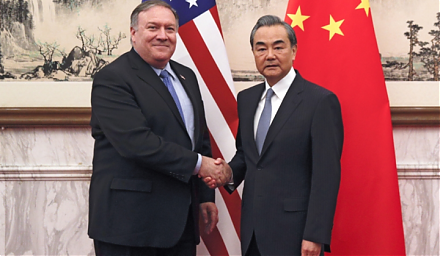

2019-12-28 09:36:00 Sat ET
treasury deficit debt employment inflation interest rate macrofinance fiscal stimulus economic growth fiscal budget public finance treasury bond treasury yield sovereign debt sovereign wealth fund tax cuts government expenditures
Global debt surges to $250 trillion in the fiscal year 2019. The International Institute of Finance analytic report shows that both China and the U.S. account for at least 60% of this sharp increase in global debt. In particular, global public debt increases from $65 trillion to $70 trillion in 2019, and this increase arises primarily from the recent surge in U.S. federal debt. This latter public debt accumulation results from the recent Trump tax cuts and infrastructure expenditures.
Meanwhile, the current low-interest-rate environment makes it extremely easy for public corporations and sovereign wealth funds to borrow more money worldwide. Total government debt represents more than 2.5 times annual real GDP in China. Low long-run government bond yields and high corporate debt mountains continue to be red alerts for the next recession in several economies such as Britain, France, Germany, Japan, Italy, and Spain. The monetary authority cannot sustainably fund fiscal deficits via new public bond issuance without an eventual increase in money supply growth or price inflation. When push comes to shove, an inflationary shock above the 2% target may tilt the central bank response toward a hawkish monetary policy emphasis on price stabilization.
If any of our AYA Analytica financial health memos (FHM), blog posts, ebooks, newsletters, and notifications etc, or any other form of online content curation, involves potential copyright concerns, please feel free to contact us at service@ayafintech.network so that we can remove relevant content in response to any such request within a reasonable time frame.
2017-02-01 14:41:00 Wednesday ET

President Trump refreshes his public image through his presidential address to Congress with numerous ambitious economic policies in order to make America g
2019-07-01 12:35:00 Monday ET

Apple releases the new iOS 13 smartphone features. These features include Dark Mode, Audio Share, Memoji, better privacy protection, smart photo collection,
2025-01-22 08:35:08 Wednesday ET

President Donald Trump blames China for the long prevalent U.S. trade deficits and several other social and economic deficiencies. In recent years, Pres
2023-12-10 09:23:00 Sunday ET

U.S. federalism and domestic institutional arrangements A given country is federal when both of its national and sub-national governments exercise separa
2019-10-01 11:33:00 Tuesday ET

The Trump administration postpones increasing 25% to 30% tariffs on $250 billion Chinese imports after China extends an olive branch to de-escalate Sino-Ame
2023-09-28 08:26:00 Thursday ET

Daron Acemoglu and James Robinson show a constant economic tussle between society and the state in the hot pursuit of liberty. Daron Acemoglu and James R